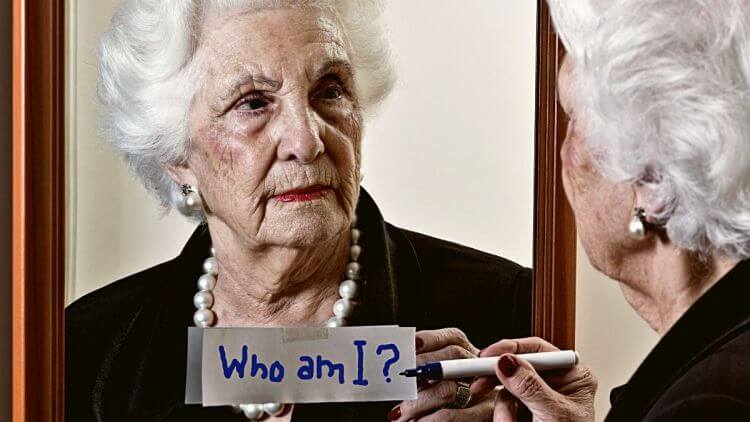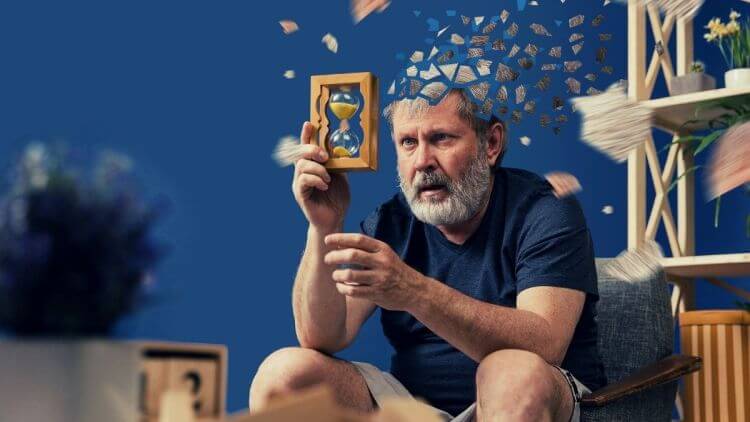What’s the connection of Alzheimer’s disease and mirrors? Well, it’s not particularly a good one.
There’s something called the “mirror phenomenon” which is when someone with Alzheimer’s disease looks in the mirror and thinks they are looking at another person.
Alzheimer’s Disease and Mirrors – Good or Bad?
Some Alzheimer’s patient advisors report that the mirror phenomenon could be a good thing. For example, if someone was close to their mother and looking into the mirror, he or she sees their mother, the old relationship is renewed, in a way. And here’s a woman with dementia that could not recognize herself in the mirror and she starts talking to the ‘new woman’ as if she might become a new friend: video on Alzheimer mirror.
Yet the answer is simple. It’s to make the mirrors in the house “Alzheimer mirrors.” Of course, you have to actually put one plus one together to determine that this mirror phenomenon is happening.
The mirror phenomenon was first identified in 1925. It’s been tied to those with Alzheimer’s disease, traumatic brain injury, and vascular dementia. Up to 5.4% of people with these disorders experience the mirror phenomenon.
Based on my experience working with people who have Alzheimer’s disease, mirrors and dementia do not mix. I have witnessed far more negative outcomes than positive.
Imagine it for yourself and you might understand why. You are walking in a place that may or may not be familiar. You need to go to the bathroom. You’re confused. You go into the bathroom, close the door behind you, and there, standing in front of you, is a stranger.
You ask them to leave and they do not. What are they doing in your house? What are they doing in your bathroom? Why won’t they leave?
If it’s a man with Alzheimer’s disease going to urinate and there happens to be a mirror over the toilet, the man gets quite agitated because “no one should be watching me pee.” When this incident is repeated, he gets to the point where he simply doesn’t want to go to the bathroom anymore. Others don’t want to bathe anymore. They fear that someone will be watching them bathe.
Part of the problem is that many seniors with Alzheimer’s disease revert back to an early time in their lives. They think they’re younger than they are. I’ve tried to calm eighty-year-old women who are wondering where their young children ran off to. When they see themselves in the mirror, they don’t recognize “that old person” staring back at them.
That’s why I always recommended removing mirrors when considering bathroom safety for people with Alzheimer’s.
Others may see the person in the mirror as an intruder. And this startles them enough to make them act illogically and be ramped up emotionally, unable to be calmed down.
The mirror phenomenon may also be called “self-recognition in the mirror condition” where the dementia patient doesn’t recognize himself in the mirror. Most of the time when this term is used, it’s because mirrors are downright frightful. They can lead to anxiety, intense anger and even send someone into a fit of terror and hysteria.
Studies on the Mirror Phenomenon
Humans can recognize themselves in the mirror starting around 18-24 months. Scientists say that once a kid can do this, you can expect them to begin developing an identity of themself. At 6 to 12 months, kids looking in the mirror think that the image belongs to someone else. So they decide to be friendly with the image. You’ll see them smiling and laughing and making noises at the person in the mirror.
The next year some children become a little cautious about who is in that mirror. They don’t smile at the face that often and noises are at a minimum. They may even be a little self-conscious. But at 20 to 24 months, toddlers know that it’s them in the mirror.
The children’s face recognition skills start developing early in life right after birth. Within the first few months, babies recognize and prefer their mother’s face over other people’s faces. Their face recognition skills continue developing until the age of 11-12. That’s when they stop. And that’s why most people’s face recognition skills really aren’t that good at all.
Face recognition is one of the topics that I’ve studied quite extensively and have written books on it. In my own studies, adults were unable to remember more than four or five facial characteristics, even after being given a whole minute to observe a face.
Yet with training, these same people are able to double or even triple their ability to recognize faces within a day. You can find out more and learn face recognition in a fun way at my site, WhoWasThatPerson.com. It should be up and ready by April 2022. If you like watching videos check out my Youtube channel, Faces are Beautiful.
It seems to me that what is happening with the Alzheimer disease and mirrors is that the brain is regressing back to an earlier time in life. In some cases the time warp is taking them back all the way to the age of 20 to 24 months.
One study in 1992 on 29 patients with Alzheimer disease that was done in France showed that all who had moderately severe cognitive decline could still recognize themselves in the mirror. However, one out of every four patients that were one level worse than these subjects could not recognize themselves in the mirror.
Animals also have face recognition skills.
If you need a diversion from what you are doing and want to smile, check out a few of these videos on how animals react when seeing themselves in the mirror:
Watching animals or children react to seeing themselves in the mirror is fascinating.
When you watch these videos, you probably aren’t thinking that their behavior means they have Alzheimer disease when looking in the mirror. It’s simply the skill (or lack of it) of face recognition. Humans have a part of the brain dedicated to face recognition called the face fusiform area or FFA.
This area can be large and result in super high abilities to recognize faces. In this case, someone will see a face once and be able to morph it automatically in their head and decide accurately whether or not another face is the same person years later.
Interestingly, the scientists for Alzheimer disease and mirror phenomenon are not even addressing the face fusiform area. It’s possible that once they do, we might have a lot of new revelations on dementia.
Are Mirrors a Problem for Your Loved One?
Take the quiz below to see if it’s possible that your loved one might be affected by this way.
Answer yes or no to every question.
- Does your loved one avoid mirrors?
- Does your loved one have times of the day where suddenly he or she starts acting irrationally, almost out of the clear blue?
- Has your loved one progressed in Alzheimer’s disease to the point of agitation, anger outbursts or terror?
- Does your loved one recognize him or herself in the mirror?
- Does your loved one still have the ability to recognize faces of people in the family?
- Does your house have a lot of reflective surfaces? There are ways that people try to make their homes brighter with reflective surfaces such as high-gloss paint, furniture with glass surfaces, mirrors on the wall, medicine cabinets, some windows, water pools, and polished metal. Windows can reflect your likeness, although fuzzy, especially when it’s dark outside.
- Does your house have a lot of very large windows?
- Does your loved one gaze into the mirror for 10 minutes? If the illumination in this location is low and someone is staring into the mirror for a long time, strange faces will appear in an apparition. It’s common to see monsters, archetypical faces, animals and the faces of those who have passed on.
- Do you have a lot of mirrors in your home?
If you had a lot of “yes” answers, this article is definitely for you. The greater the number of yes answers, the greater the chances that your loved one is experiencing Alzheimer mirror phenomenon.
What Can Be Done About the Mirror Phenomenon?
What can you do for those with Alzheimer disease who can’t handle mirrors? There actually are some common sense solutions.
- Transform the mirror. You can cover them up so they aren’t so frightful. Here’s one Artscape Magnolia Window Film 24” by 36” that should cover the big mirrors. The artscapes will also be good for providing more privacy.
The process of applying them is quite easy: 1) Clean your window or mirror. 2) Measure the area you will need to cover. 3) Cut the Artscape to the dimensions of your window with a razor knife. 4) Wet down the glass. Then peel off the adhesive backing on the Artscape and apply it to the window or mirror. 5) Squeegee out the air bubbles.
- Cover up your medicine cabinet doors that are mirrored. You may decide to simply remove the doors.
- You may opt for covering a mirror with a poster instead.
- Close all drapes by large windows before any darkness comes.
- If you need a full-length mirror in your home, then hide it behind a door during the times when it isn’t in use.
- If mirrors are mounted on the wall, place a large piece of fabric or old blanket over the mirror.
- Use semi-sheer curtains on windows to hide reflections.
It’s not the end of the world if your loved one has Alzheimer mirror phenomenon. Just the end of your mirrors in the house.


